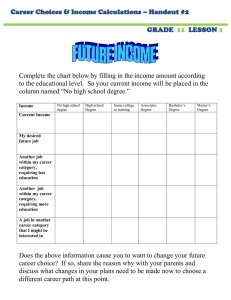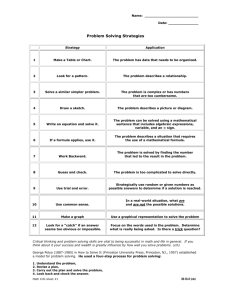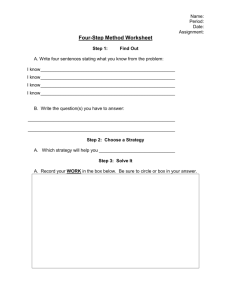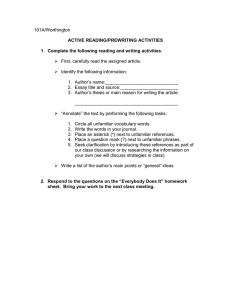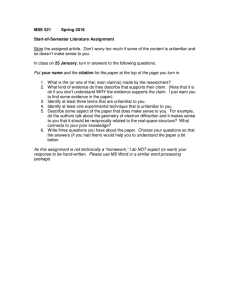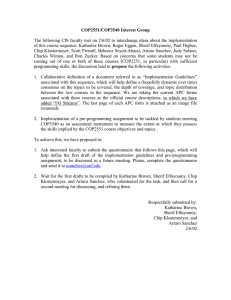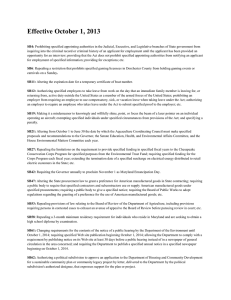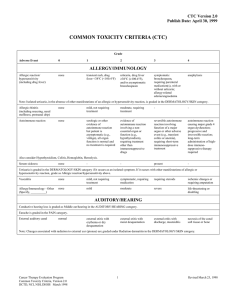SUCCESS IN MATH: TIPS ON PROBLEM SOLVING
advertisement
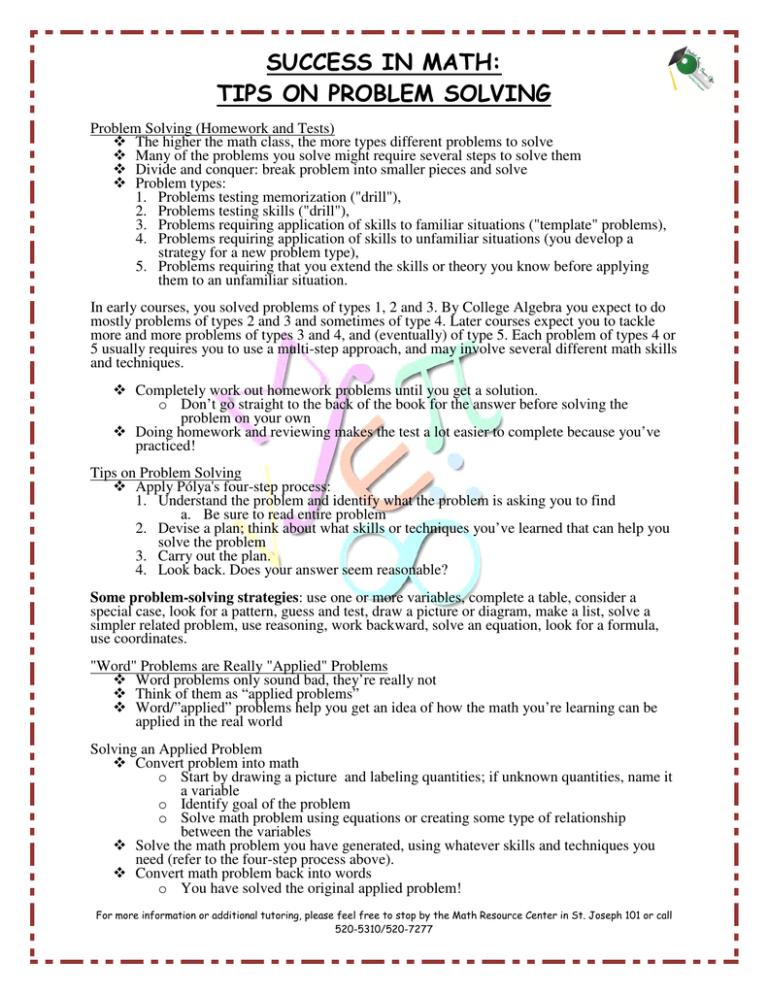
SUCCESS IN MATH: TIPS ON PROBLEM SOLVING Problem Solving (Homework and Tests) The higher the math class, the more types different problems to solve Many of the problems you solve might require several steps to solve them Divide and conquer: break problem into smaller pieces and solve Problem types: 1. Problems testing memorization ("drill"), 2. Problems testing skills ("drill"), 3. Problems requiring application of skills to familiar situations ("template" problems), 4. Problems requiring application of skills to unfamiliar situations (you develop a strategy for a new problem type), 5. Problems requiring that you extend the skills or theory you know before applying them to an unfamiliar situation. In early courses, you solved problems of types 1, 2 and 3. By College Algebra you expect to do mostly problems of types 2 and 3 and sometimes of type 4. Later courses expect you to tackle more and more problems of types 3 and 4, and (eventually) of type 5. Each problem of types 4 or 5 usually requires you to use a multi-step approach, and may involve several different math skills and techniques. Completely work out homework problems until you get a solution. o Don’t go straight to the back of the book for the answer before solving the problem on your own Doing homework and reviewing makes the test a lot easier to complete because you’ve practiced! Tips on Problem Solving Apply Pólya's four-step process: 1. Understand the problem and identify what the problem is asking you to find a. Be sure to read entire problem 2. Devise a plan; think about what skills or techniques you’ve learned that can help you solve the problem 3. Carry out the plan. 4. Look back. Does your answer seem reasonable? Some problem-solving strategies: use one or more variables, complete a table, consider a special case, look for a pattern, guess and test, draw a picture or diagram, make a list, solve a simpler related problem, use reasoning, work backward, solve an equation, look for a formula, use coordinates. "Word" Problems are Really "Applied" Problems Word problems only sound bad, they’re really not Think of them as “applied problems” Word/”applied” problems help you get an idea of how the math you’re learning can be applied in the real world Solving an Applied Problem Convert problem into math o Start by drawing a picture and labeling quantities; if unknown quantities, name it a variable o Identify goal of the problem o Solve math problem using equations or creating some type of relationship between the variables Solve the math problem you have generated, using whatever skills and techniques you need (refer to the four-step process above). Convert math problem back into words o You have solved the original applied problem! For more information or additional tutoring, please feel free to stop by the Math Resource Center in St. Joseph 101 or call 520-5310/520-7277
